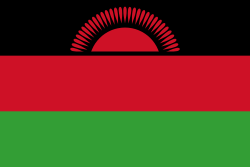| Malipenga | |
|---|---|
| Etymology | Trumpets |
| Stylistic origins | military drills |
| Cultural origins | After World War I, Nyasaland (current Malawi) |
| This article is part of a series on the |
| History of the Tumbuka people |
|---|
 |
Malipenga is an African dance music of the Tonga people of Malawi. [1] The dance was originated in imitations of military drills [2] when they fought alongside the British Army in World War I. [3]
Contents
Malipenga is common in the central and northern regions of Malawi, as in Tanzania, Mozambique, and Zambia with slight modifications. [4] Each year in August is held a big Malipenga festival in Northern Malawi in a different town each year. [5]
